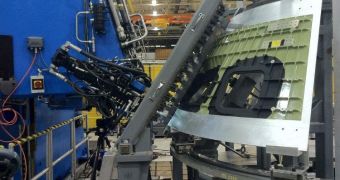The first space-bound Orion Multi-Purpose Crew Vehicle (MPCV) has just entered the first stages of assembly, officials from the American space agency announced yesterday. This marks an impressive milestone in the quest to explore worlds beyond our own.
Orion was formerly part of Project Constellation, the Bush-era space program that sought to put human astronauts back on the Moon by 2020. Since the endeavor was canceled last year, only a stripped-down version of the original Orion, the MPCV, continued development.
A prototype of the space capsule has already been completed by experts at Lockheed Martin, the primary contractor NASA selected for this mission. However, it is now time to start building the first of the new generation of spacecraft, one that will actually fly in space.
Under the new directions for space exploration set forth by US President Barack Obama, the space agency is to focus on reaching a near-Earth asteroid by 2025, and Mars by the early 2030s. Orion will play a critical role in both these projects.
The first weld on the vehicle was made this Friday, September 9, at the New Orleans-based NASA Michoud Assembly Facility (MAF). Orion is the first manned spacecraft to be built at this plant since the space shuttle Endeavour rolled out of its gates back in 1991.
According to NASA Johnson Space Center (JSC) Orion program manager Mark Geyer, the “Orion team has maintained a steady focus on progress, and we now are beginning to build hardware for spaceflight.” He adds that the welding process used yesterday was developed for the Orion project.
This is an innovative friction stir welding process, experts say, that was put together in order to ensure seamless, water-proof bonds between various components of the hull. The capsule needs to have a very smooth surface that would ensure it can withstand the rigors of spaceflight.
Friday's achievement “marks a major milestone in NASA's ambitious plans to send humans farther into space than the nation has ever been before. We're not only working to send people into deep space, we are putting people to work right here in America,” NASA Headquarters spokesman David Weaver says.
He adds that, once the building process is completed, the Orion MPCV will be delivered to the NASA Kennedy Space Center (KSC), where it will be mated with its heat shield. Also at the KSC, the capsule will undergo final assembly and checkout operations before launching to space.

 14 DAY TRIAL //
14 DAY TRIAL //